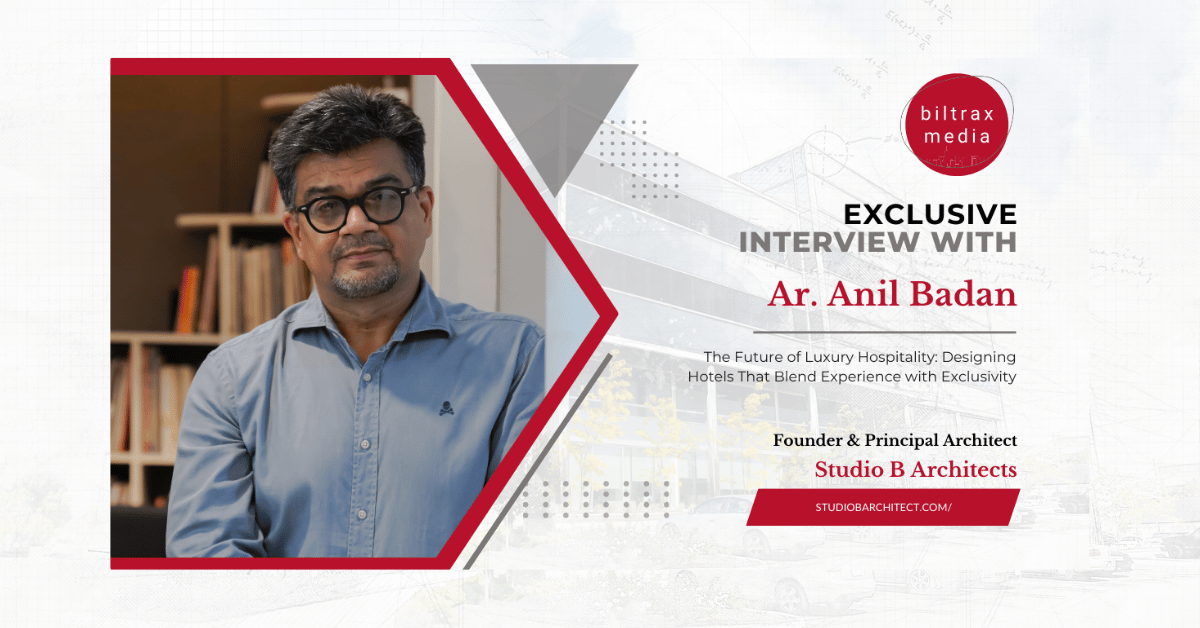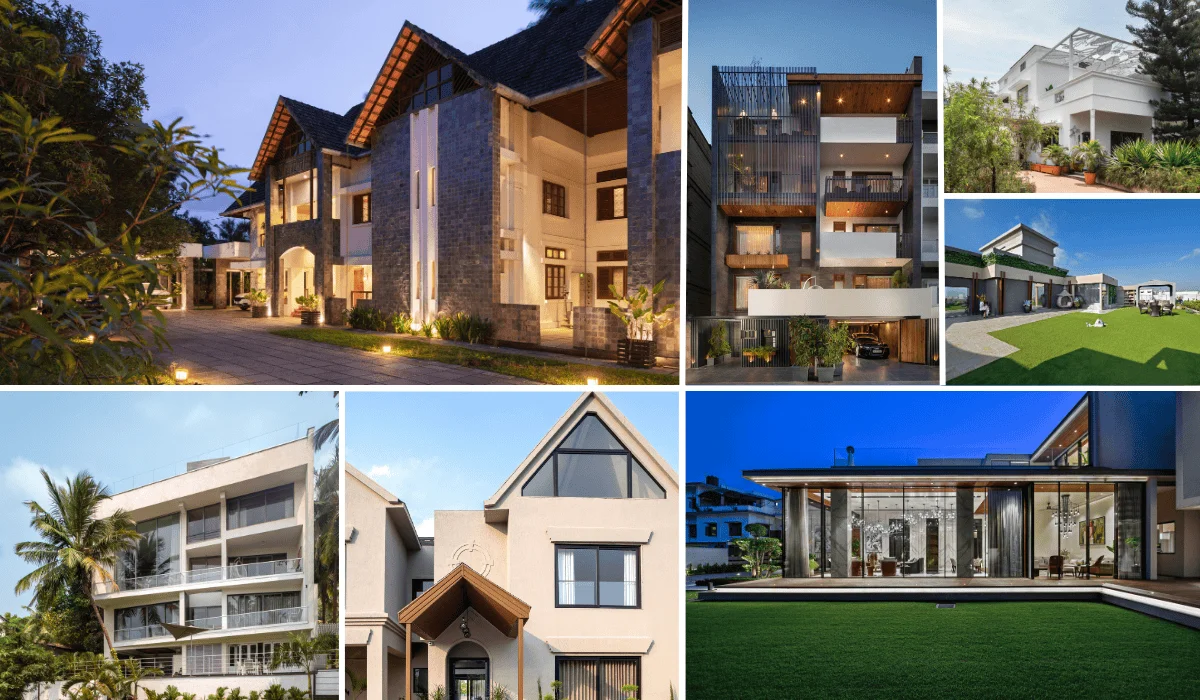In most urban settings today, the very basics of living such as clean air, adequate water, waking up to birdsongs, and the joy of being able to taste fruit fresh off the tree have started to become a scarcity. By harnessing the principles of sustainable architecture and aligning with the growing demand for experiencing ‘life in abundance’ beyond urban confines, Earthitect pioneers a shift that not only enhances human experiences but also nurtures the natural world. In this insightful article, George E. Ramapuram, Managing Director & Principal Architect of Earthitects, engages in a profound conversation with Biltrax Media shedding light on the transformative concept of ‘Reverse Urbanization’ and its implications for contemporary living.
Never like before, there is now a need for balance in living and a longing to reconnect with Nature. High population density and pressure on land have led to rapid urbanization – the Earth’s natural recharging capacity has been rendered ineffective in most current urban settings that we inhabit today. In such urban environments, the basics of ‘living’ such as clean air, adequate water, waking up to birdsong, the joy of tasting fruit fresh off the tree, or even the ability to experience a quiet moment have started to become scarce. Even the birds and bees have begun to leave us. Slowly but steadily, this very urban-centric lifestyle has led most humans to have living experiences that are substandard not only for us but also for the natural world around us.

With the advent of ultra-high-speed internet, the ability to work from anywhere in the world and easy access to convenience in remote locations, we can live and work from anywhere in the world as opposed to our current urban settings. Today, after the pandemic, we witness a drastic transformation in how we experience living – an uncompromising need for a balanced relationship between people, built space and Nature. We are questioning ourselves – Are we experiencing life in its abundance? Are we ‘living’ to the fullest?
The demand for experiencing ‘life in abundance’ in non-urban habitats is a clear indicator of metamorphosis in living and dwellings best explained. Earthitects have been rooted firmly with the core belief that ‘God is the greatest Architect and Nature, the greatest design to ever exist’ and has resulted in harnessing Nature to ‘facilitate life in its abundance by enabling the fullest enjoyment of God’s creations.’ The future of living is based on the ideology of ‘Reverse Urbanization’ or going back to Nature – a sensitive and sensible shift that will undeniably drive lifestyle and architectural design trends. Aligning with the trend, architecture and design can reestablish the experience of connecting with oneself and the natural environment – a relationship that our modern, urban-centric lifestyle has damaged.
Architecture aids ‘life in abundance’
Architecture steered by Nature can change how people live by bringing the essence of the wilderness into every square foot of the space inhabited. Dwellings designed to facilitate natural life focus on employing techniques that lead to a sustainable lifestyle – embracing the existing Nature of the site, context, native trees, organic vegetable gardens, and endangered birds, design measures to absorb heat during the day and release it at night that cut down on heating and cooling costs, and usage of native and natural materials. Also, a basic design and construction approach is to reduce the pressure on the land through rain-water harvesting and composting measures that lead to zero-waste homes. Here, the Earth’s natural recharging capacity is positive rather than equal. This way, we give back to the planet instead of taking from it. At Earthitects, designing around Nature rather than ‘on’ signifies pure luxury.

Is Nature a Luxury for humans?
One such Eco-luxury design story is of Stone Lodges in Wayanad, a cluster of 15 Private Residences inspired by ‘Reverse Urbanization’ and the native hilly architecture – to address the need for a strong balance between people, spaces and Nature. Wayanad, the context of Stone Lodges demonstrates slow living in harmony with native birds and trees, zero noise, light and air pollution, all while being in proximity to basic conveniences of a town, be it restaurants or the high-speed internet. The Private Residences are designed in large parcels of land to enhance the land’s natural terrain, leaving existing boulders, trees and other natural features on the site completely undisturbed. In other words, when a building comes in the way of a tree or boulder, the design is altered to go around the existing structure and accommodate it to be a part of the natural design, hence the magical experience of a tree right within the residence. No fully grown trees are cut on the site; trees used in construction are responsibly sourced from managed plantations/mills where replanting and conservation efforts are in place, along with reclaimed wood and wood from fallen trees. As a renewable resource, wood has a lower carbon footprint than other modern construction materials. In addition, renewable materials like clay roofing tiles and eucalyptus poles form the supports, native to Wayanadian architecture. Stone walls are more sustainable and last longer when compared with concrete. The greenery and local materials used at the forest site maintain the interior temperature between 16°C-26°C, a stark difference from the sweltering central city of Wayanad.

Early Bird to ‘Reverse Urbanization’
Wayanad is home to more than 118 species of endemic birds. The introduction of prolific fruit trees and birdbaths – the lily ponds surrounding the deck, invite them to coexist with humans. With the break of dawn, the harmonies of chirping add vibrance and joy to the serenity that can turn anyone into a bird enthusiast!
Some birds that are spotted at Stone Lodges: Crimson-fronted barbet, Malabar Hornbill, White-cheeked Barbet, Orange Minivet, Red-whiskered Bulbul, Blue-capped Rock Thrush, Grey Wagtail, White-browed Wagtail, etc.

In the future, the ideology of ‘Reverse Urbanization’ will lead to environmentally responsible investments – living in the wilderness with such nuance and pampering creates a new definition of luxury away from hectic city life. The future of living is going back to Nature!

Biltrax Construction Data is tracking 28,000+ projects on their technology platform for their clients.
Get exclusive access to upcoming projects in India with actionable insights and gain a competitive advantage for your products in the Indian Construction Market.
Visit www.biltrax.com or email us at contact@biltrax.com to become a subscriber and generate leads.
Disclaimer: The information contained herein has been compiled or arrived at, based upon information obtained in good faith from sources believed to be reliable. All such information and opinions can be subject to change. The image featured in this article is for representation purposes only and does not in any way represent the project. If you wish the article to be removed or edited, please email editor@biltrax.com.
Discover more from Biltrax Media, A Biltrax Group venture
Subscribe to get the latest posts sent to your email.






















